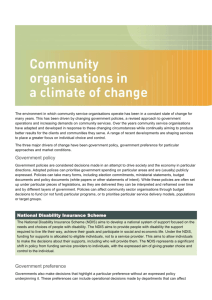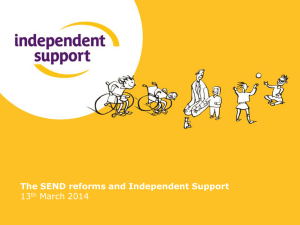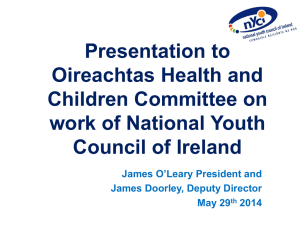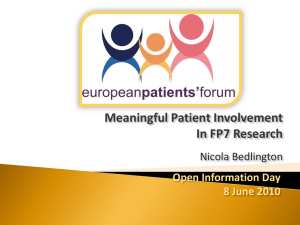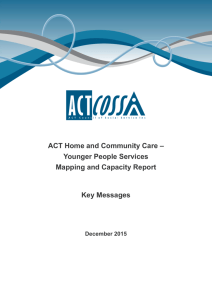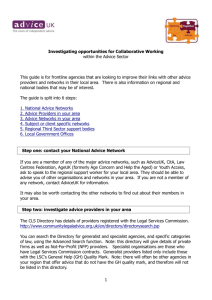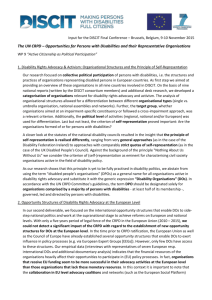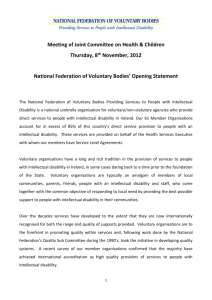this document (DOC)
advertisement
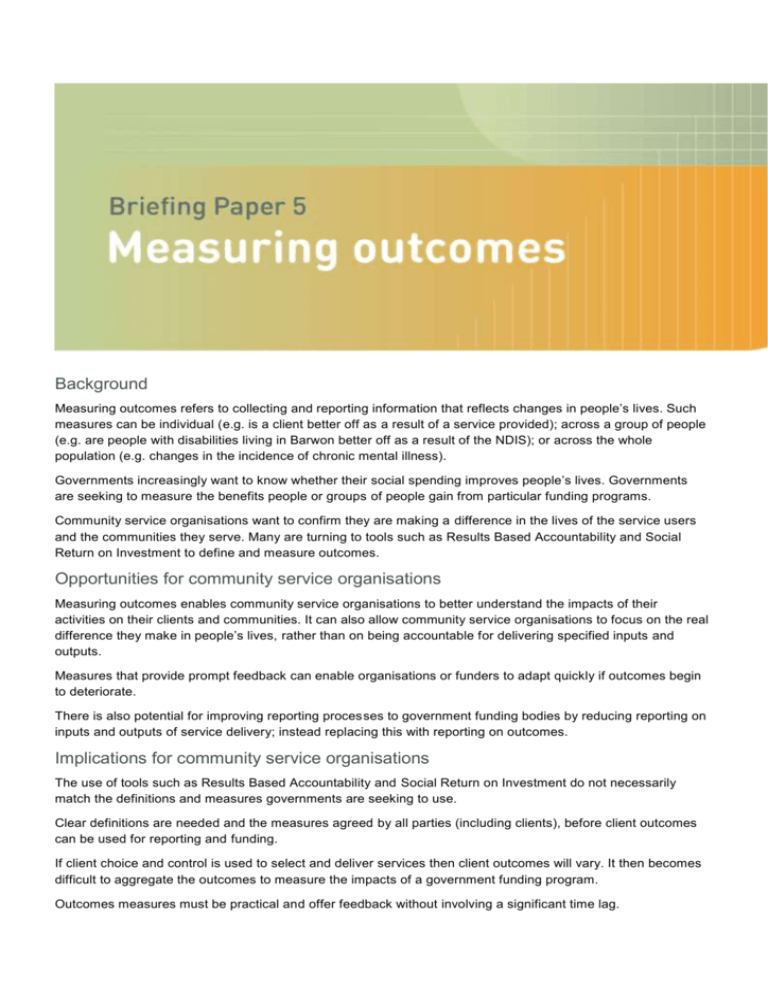
Background Measuring outcomes refers to collecting and reporting information that reflects changes in people’s lives. Such measures can be individual (e.g. is a client better off as a result of a service provided); across a group of people (e.g. are people with disabilities living in Barwon better off as a result of the NDIS); or across the whole population (e.g. changes in the incidence of chronic mental illness). Governments increasingly want to know whether their social spending improves people’s lives. Governments are seeking to measure the benefits people or groups of people gain from particular funding programs. Community service organisations want to confirm they are making a difference in the lives of the service users and the communities they serve. Many are turning to tools such as Results Based Accountability and Social Return on Investment to define and measure outcomes. Opportunities for community service organisations Measuring outcomes enables community service organisations to better understand the impacts of their activities on their clients and communities. It can also allow community service organisations to focus on the real difference they make in people’s lives, rather than on being accountable for delivering specified inputs and outputs. Measures that provide prompt feedback can enable organisations or funders to adapt quickly if outcomes begin to deteriorate. There is also potential for improving reporting processes to government funding bodies by reducing reporting on inputs and outputs of service delivery; instead replacing this with reporting on outcomes. Implications for community service organisations The use of tools such as Results Based Accountability and Social Return on Investment do not necessarily match the definitions and measures governments are seeking to use. Clear definitions are needed and the measures agreed by all parties (including clients), before client outcomes can be used for reporting and funding. If client choice and control is used to select and deliver services then client outcomes will vary. It then becomes difficult to aggregate the outcomes to measure the impacts of a government funding program. Outcomes measures must be practical and offer feedback without involving a significant time lag. The cost of measuring outcomes through direct service delivery could take away the benefits to clients or consumers (e.g. information technology systems may need upgrading). Costs may be minimised by organisations working collaboratively to develop systems of data collection and reporting. Example: The Compass guide to social impact measuring The Compass guide for social impact measurement developed b y the Centre for Social Impact is a practical tool that explores and explains key topics, concepts, questions and principles of outcomes measurement. The Compass unpacks the difference between outputs, outcomes and impacts. It contains an overview to assist organisations to navigate commonly used methods or approaches to assessing outcomes. It provides examples of a range of methodologies for measurement, including the strengths and limitations of each approach. More information on The Compass: Your guide to social impact measuring. Prepared by the Victorian Council of Social Service (VCOSS) in consultation with members of the Ageing, Disability and Mental Health Collaborative Panel, which comprises the Australian Federation of Disability Organisatio ns (AFDO), Carer’s Victoria, Council on the Ageing (COTA) Victoria, Ethnic Communities’ Council of Victoria (ECCV), National Disability Services (NDS), Psychiatric Disability Services of Victoria (VICSERV) and VCOSS.
